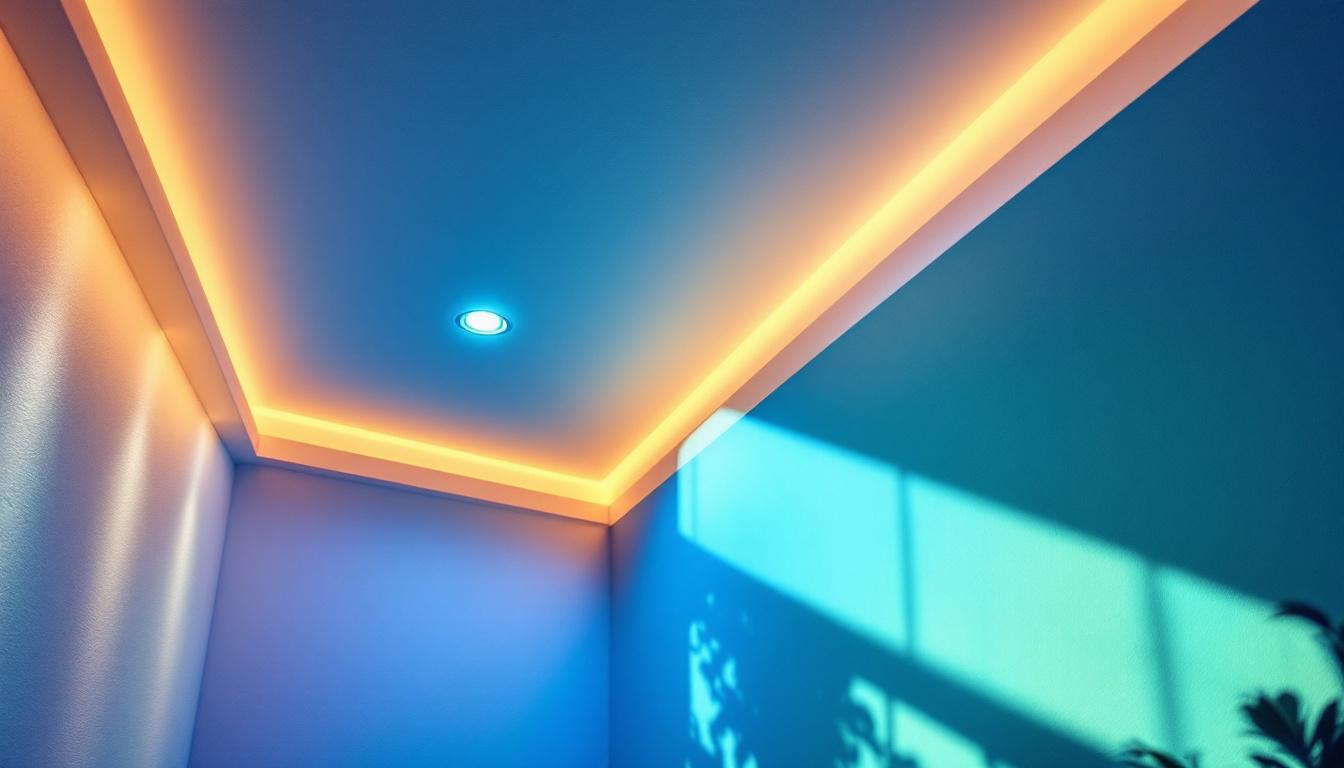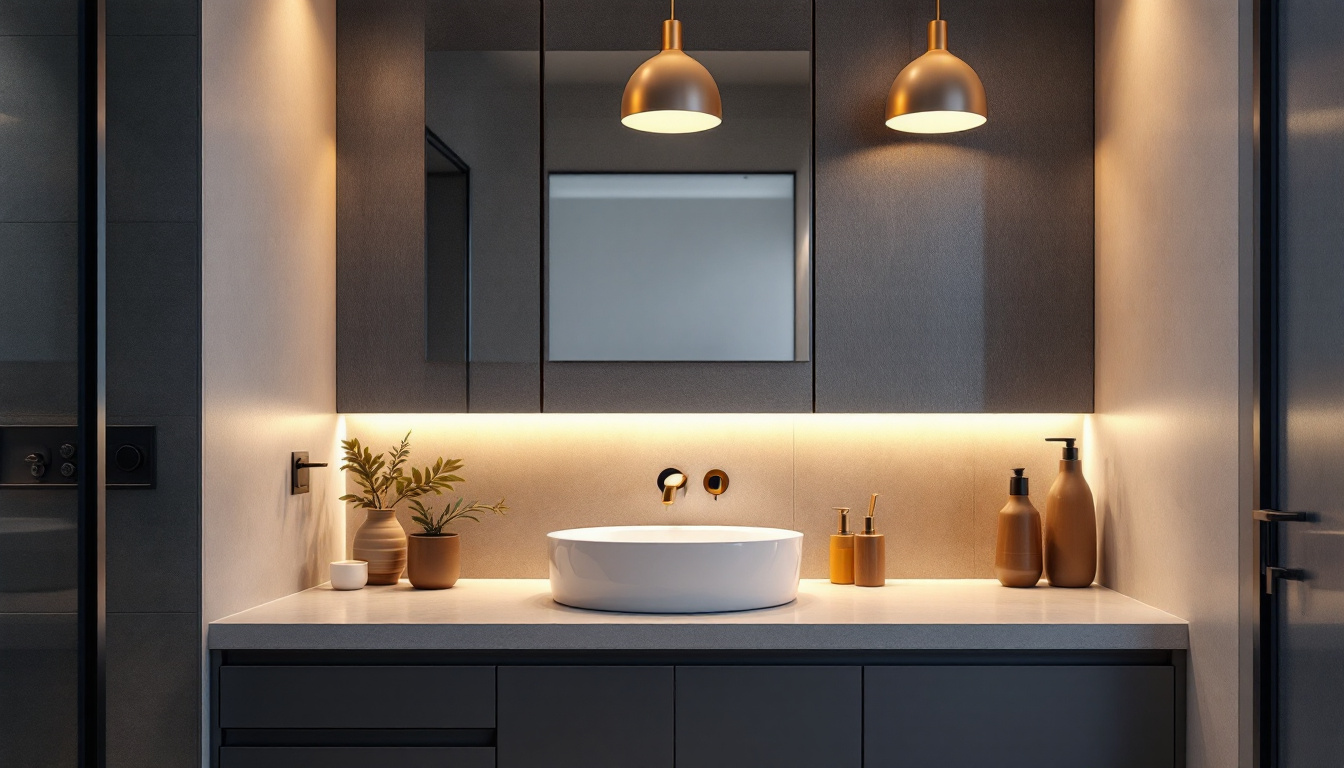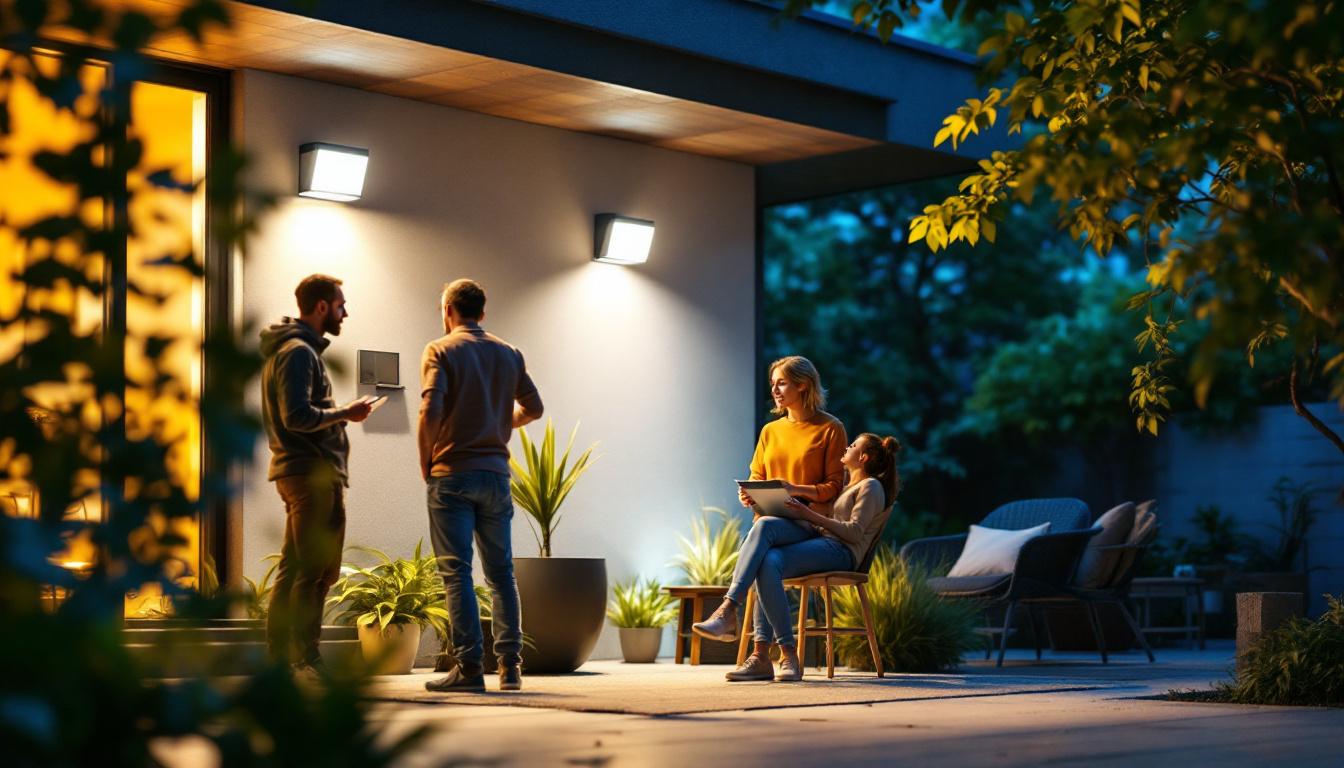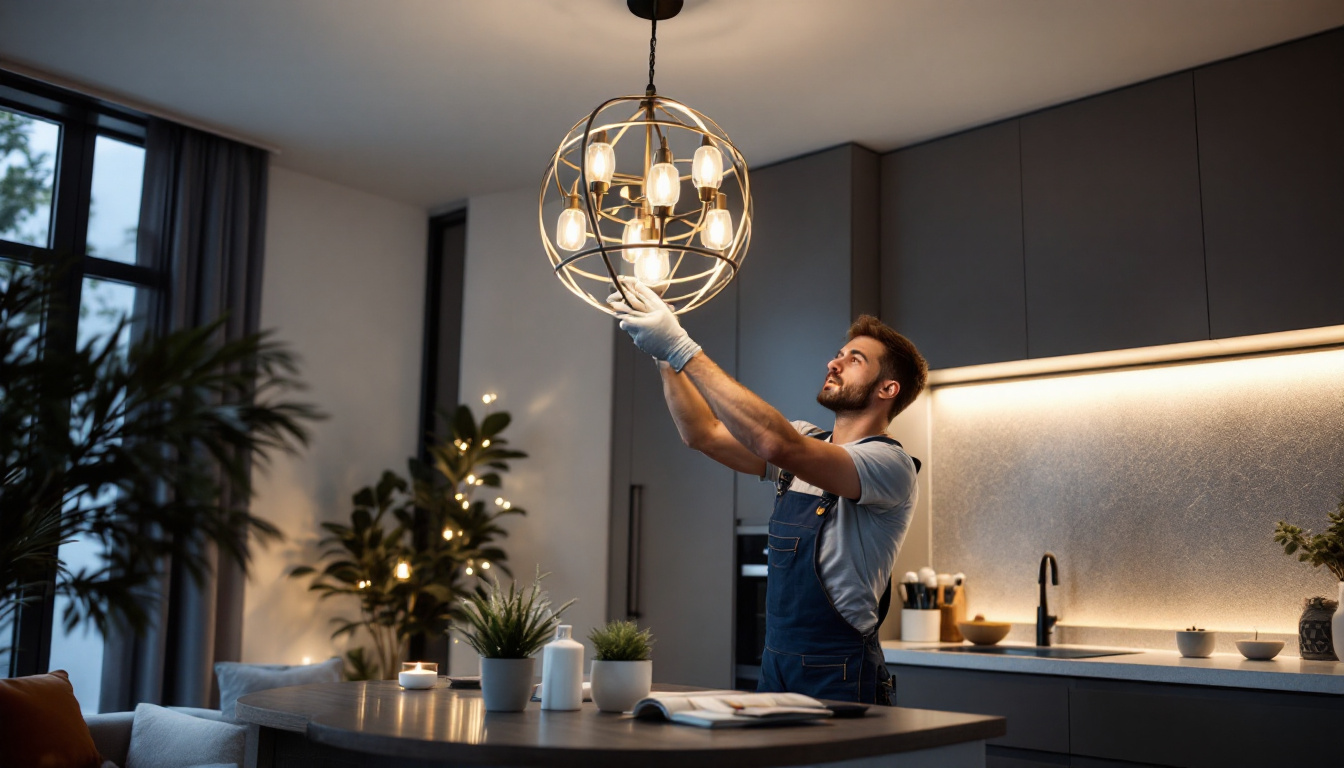
Recessed lighting has become a staple in modern interior design, offering clean aesthetics and effective illumination. However, when it comes to angled ceilings, the installation process introduces unique challenges that lighting contractors must navigate carefully. Unlike flat ceilings, angled or sloped ceilings require specialized fixtures and installation techniques to ensure both functionality and safety.
One of the primary challenges is the alignment of recessed fixtures. Standard recessed lights are designed for flat surfaces, so when installed on an angled ceiling, the light beam may not project as intended. This can lead to uneven lighting, unwanted shadows, or glare. Additionally, the ceiling’s pitch affects how the housing fits within the joist space, sometimes necessitating custom mounting solutions. The angle of the ceiling can also impact the aesthetic appeal of the lighting; fixtures that are not properly aligned can detract from the overall design of the space, making it crucial for contractors to take precise measurements and consider the visual outcome.
Moreover, the insulation and fire safety considerations become more complex. Angled ceilings often have limited space between the ceiling surface and the roof deck, which can impact the choice of IC-rated (Insulation Contact) or non-IC-rated fixtures. Contractors must be vigilant about adhering to local building codes and manufacturer guidelines to prevent overheating and fire hazards. The choice of insulation material is also vital; for instance, using spray foam insulation can create a tighter seal but may restrict airflow, necessitating careful planning to ensure that the recessed lights remain safe and effective over time.
Lighting contractors should evaluate several critical factors before proceeding with recessed lighting on angled ceilings:
Understanding these variables upfront helps avoid costly rework and ensures a professional finish. Additionally, contractors should consider the overall design vision of the space. The integration of recessed lighting with other elements, such as architectural features or furniture placement, can enhance the functionality and ambiance of the room. For example, strategically placed recessed lights can highlight artwork or architectural details, creating a focal point that draws the eye and adds depth to the design. Furthermore, the use of dimmers can provide flexibility in lighting levels, allowing homeowners to adjust the atmosphere according to different occasions, from bright and vibrant for gatherings to soft and intimate for relaxing evenings.
Not all recessed lighting fixtures are created equal, especially when it comes to angled ceilings. Selecting the appropriate fixture is critical to achieving optimal lighting performance and ease of installation.
Adjustable or “gimbal” recessed lights are often the preferred choice for sloped ceilings. These fixtures allow the light source to be tilted within the housing, directing the beam where it’s needed despite the ceiling angle. This flexibility helps maintain consistent illumination and reduces glare. Additionally, gimbal lights can be particularly useful in highlighting architectural features or artwork on the walls, creating a visually appealing focal point in the room.
Another important consideration is the housing type. Remodel housings are designed for installation in existing ceilings, while new construction housings are suited for open framing. For angled ceilings, new construction housings with adjustable brackets can accommodate varying pitches and joist configurations. It’s also worth noting that the choice of housing can impact the overall aesthetic of the space; sleek, low-profile housings can create a modern look, while more traditional options may complement classic decor.
Insulation Contact (IC) rating is a critical specification. IC-rated fixtures are designed to be safely installed in direct contact with ceiling insulation, minimizing fire risk. Non-IC-rated fixtures require a clearance space around the housing.
Since angled ceilings often have limited space, IC-rated fixtures provide greater flexibility and safety. Lighting contractors should verify local code requirements and manufacturer specifications to select the appropriate rating. Furthermore, using IC-rated fixtures can also enhance energy efficiency by preventing heat loss, which is especially important in climates with extreme temperatures. This can lead to lower energy bills and a more comfortable living environment.
LED recessed lighting has become the industry standard due to its energy efficiency, longevity, and reduced heat output. These attributes are especially beneficial for angled ceilings where heat dissipation can be a concern.
LED fixtures also offer better dimming capabilities and color rendering, enhancing the ambiance and functionality of spaces with sloped ceilings. Contractors should consider integrated LED modules or retrofit kits compatible with existing housings for cost-effective upgrades. Additionally, the wide range of color temperatures available in LED bulbs allows homeowners to customize the mood of their space, from warm, inviting tones to cool, energizing light. This versatility is particularly advantageous in multi-functional rooms, where lighting needs may vary throughout the day and for different activities.
Proper installation techniques are vital to ensure the recessed lighting performs well and complies with safety standards. Lighting contractors must adapt their approach when working with angled ceilings.
Before cutting holes, contractors should carefully measure and mark fixture locations, taking the ceiling angle into account. Using laser levels or digital inclinometers can improve accuracy in positioning.
Spacing between fixtures should consider the beam spread and the room’s function. For instance, kitchens or workspaces may require closer spacing for task lighting, while living areas might benefit from wider spacing for ambient light. Additionally, it’s important to consider the color temperature of the bulbs being used; warmer tones can create a cozy atmosphere in living spaces, while cooler tones can enhance focus and productivity in work areas.
Ensuring that housings are securely fastened to framing members is essential, especially on angled surfaces where gravity can affect stability. Adjustable mounting brackets designed for sloped ceilings help maintain proper alignment and prevent fixture movement over time.
Contractors should verify that the fixture trim sits flush with the ceiling surface to maintain a sleek appearance and avoid light leaks. Furthermore, using trim options that complement the room’s decor can enhance the overall aesthetic, making it essential to choose finishes and styles that harmonize with existing design elements.
Routing electrical wiring in angled ceilings can be more complex due to limited access and tighter spaces. Using flexible conduit and pre-assembled wiring kits can streamline the process.
It is crucial to ensure that all connections are secure and that junction boxes are accessible for future maintenance. Contractors should also confirm that wiring complies with the National Electrical Code (NEC) and local regulations. Additionally, implementing smart lighting controls can provide added convenience and energy efficiency, allowing homeowners to adjust brightness and color temperature with ease, further enhancing the functionality of the recessed lighting system.
Proper insulation around recessed fixtures prevents heat loss and improves energy efficiency. When installing IC-rated fixtures, contractors should carefully pack insulation around the housing without compressing it.
Air sealing around the fixture housing is also important to prevent drafts and maintain indoor air quality. Using approved sealants or gaskets can help achieve an airtight installation. In addition, considering the use of energy-efficient LED bulbs can significantly reduce energy consumption, making the overall lighting system not only more sustainable but also cost-effective in the long run. This combination of insulation, air sealing, and energy-efficient lighting creates a comfortable living environment while also supporting environmentally friendly practices.
Even experienced lighting contractors can encounter pitfalls when installing recessed lighting on angled ceilings. Awareness of common mistakes helps ensure a successful outcome.
Using standard flat-ceiling fixtures on angled surfaces often results in poor light distribution and aesthetic issues. Always select adjustable or slope-specific housings to accommodate ceiling pitch.
Misaligned fixtures can create uneven lighting and distracting shadows. Taking time to measure and adjust fixture positions before final installation is essential.
Failing to use IC-rated fixtures in insulated ceilings or not maintaining required clearances can pose fire hazards. Contractors should strictly follow manufacturer guidelines and code requirements.
Neglecting to seal around fixtures can lead to energy loss and moisture problems. Proper air sealing techniques improve comfort and reduce utility costs.
Dim or flickering recessed lights often indicate wiring issues, incompatible dimmers, or faulty bulbs. Testing electrical connections and using compatible dimming controls can resolve these problems.
Beyond technical considerations, recessed lighting on angled ceilings offers opportunities to enhance interior design and functionality.
Combining recessed lighting with other light sources such as wall sconces, pendant lights, or track lighting creates a layered effect that adds depth and versatility to spaces with sloped ceilings.
Adjustable recessed fixtures can highlight architectural features, artwork, or provide focused task lighting in kitchens and home offices. This flexibility maximizes the utility of angled ceiling spaces.
Incorporating LED fixtures with smart controls allows for customizable lighting scenes and energy savings. Motion sensors, dimmers, and programmable timers contribute to sustainable and user-friendly lighting solutions.
For lighting contractors, mastering the nuances of recessed lighting installation on angled ceilings is essential for delivering high-quality, safe, and aesthetically pleasing results. By understanding the challenges, selecting appropriate fixtures, adhering to best practices, and avoiding common mistakes, contractors can confidently tackle these projects.
Staying informed about the latest products, codes, and techniques ensures that installations meet client expectations and industry standards. Ultimately, well-executed recessed lighting on angled ceilings enhances the ambiance and functionality of any space, reflecting the skill and professionalism of the contractor.
Ready to elevate your recessed lighting projects on angled ceilings? Look no further than LumenWholesale for all your lighting needs. Our spec-grade lighting products are designed to meet the challenges you face, ensuring a flawless installation every time. With unbeatable wholesale prices and free shipping on bulk orders, you can trust us to provide the best value without compromising on quality or convenience. Visit LumenWholesale today and discover how we can help you master every aspect of recessed lighting installation with ease and professionalism.

Explore the pros and cons of bathroom sink lights versus alternative lighting options in this insightful guide.

Discover the ultimate fluorescent tube socket replacement checklist for lighting contractors.

Discover expert tips on training your team in outdoor flush mount motion detector lighting. Boost security, efficiency, and safety—learn how today!.

Discover the crucial role of affordable light fixtures in the success of lighting contractors.